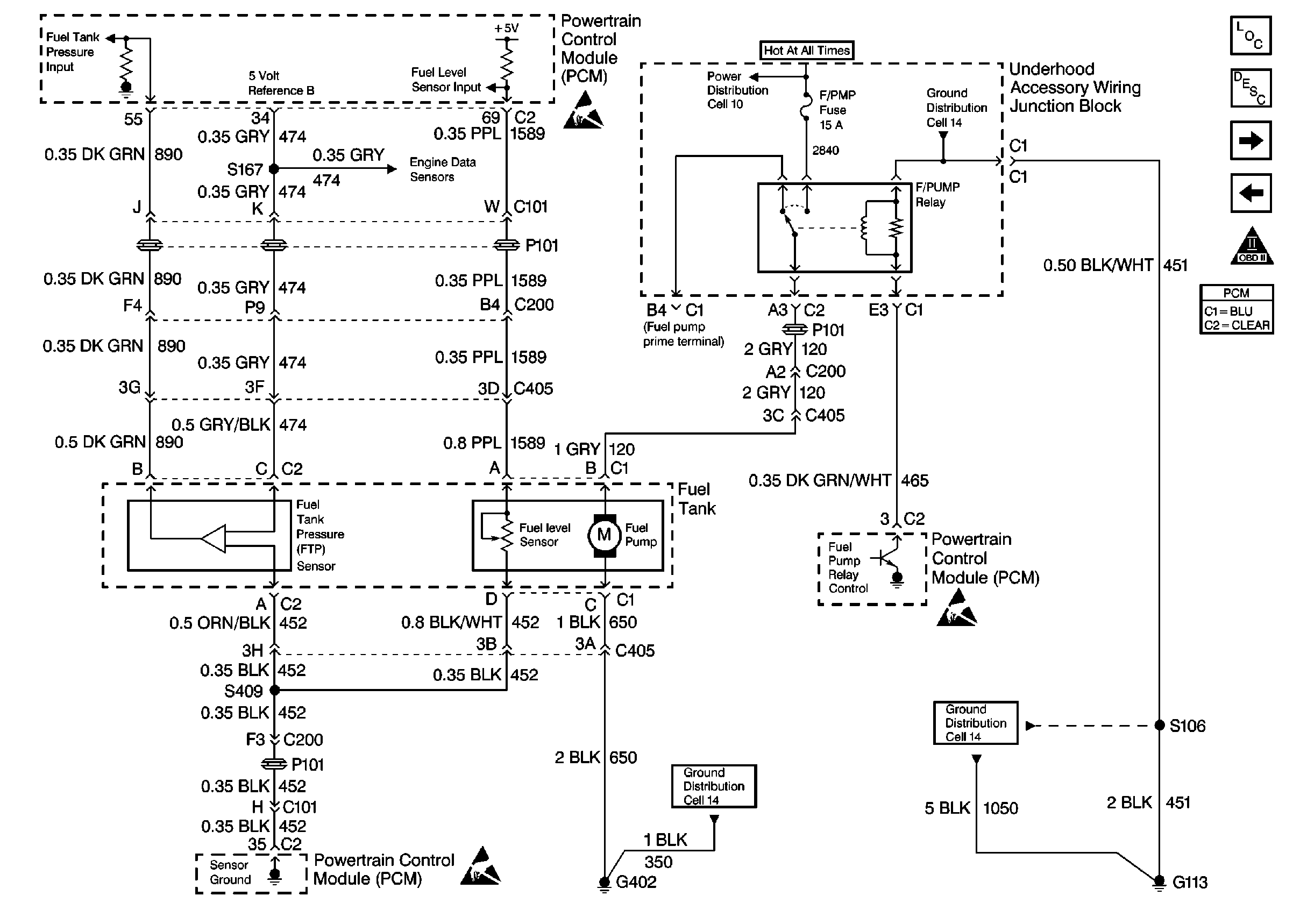Refer to Engine Controls Schematics
Cell 21: Fuel Controls - VIN K

.
Circuit Description
The Vehicle Theft Deterrent (VTD) system is incorporated within the Body Control Module (BCM). The PCM monitors the state of health serail data message from the theft deterrent system to ensure that the PCM to BCM communications is established. If the PCM detects a loss of the state of health message while the engine is running, DTC P1626 will set. DTC P1626 can cause a no-start condition or normal operation depending on when the loss of theft deterrent system communication was detected. The engine will continue to start and run if the condition that set DTC P1626 occurred after the PCM received a valid theft deterrent password from the BCM and already allowed fuel during the ignition cycle. The engine will start and immediately stall if the condition that set DTC P1626 occurred before the PCM received a valid theft deterrent password. With this condition present, the PCM will inhibit fuel delivery and disable the starter until a valid theft deterrent password is detected. Refer to Content Theft Deterrent (CTD) Circuit Description
Conditions for Running the DTC
The theft deterrent system has allowed fuel delivery.
Conditions for Setting the DTC
The PCM has detected a loss of the state of health serial data message from the theft deterrent system.
Action Taken When the DTC Sets
The PCM stores conditions which were present when the DTC set as Failure Records only. This information will not be stored as Freeze Frame Records.
Conditions for Clearing the MIL/DTC
| • | The DTC becomes history when the conditions for setting the DTC are no longer present. |
| • | The history DTC clears after 40 malfunction free warm-up cycles. |
| • | The PCM receives a clear code command from the scan tool. |
Diagnostic Aids
For complete serial data line schematics and VTD system diagnosis, refer to Electrical Diagnosis.
An intermittent may be caused by a poor connection, rubbed through wire insulation or a wire broken inside the insulation. Check for the following conditions:
Important: Several BCM diagnostic procedures call for disconnecting the BCM and then turning the vehicle ignition to the RUN position. These procedures will result in the PCM setting DTC P1626. Therefore, DTC P1626 stored in history may be the result of previous BCM diagnostic work.
| • | Intermittent short circuit on the serial data circuit. Refer to Data Link Connector (DLC) System Check in Electrical Diagnosis. Be sure to check all related wiring for an intermittent short to ground or short to voltage. |
| • | Poor connection. Inspect the PCM and BCM harness and connectors for improper mating, broken locks, improperly formed or damaged terminals, and poor terminal to wire connection. |
| • | Damaged harness. Inspect the wiring harness for damage. Check for an intermittent short or open circuit in the wiring harnesses related to the BCM, including the ignition, battery feed, ground, and serial data circuits. |
Reviewing the Fail Records vehicle mileage since the diagnostic test last failed may help determine how often the condition that caused the DTC to be set occurs. This may assist in diagnosing the condition.
If the DTC cannot be duplicated and is determined to be intermittent, reviewing the Failure Records can be useful in determining when the DTC was last set. Also refer to Intermittents and Poor Connections Diagnosis in Wiring Systems.
Step | Action | Value(s) | Yes | No |
|---|---|---|---|---|
1 | Did you perform the Powertrain On-Board Diagnostic (OBD) System Check? | -- | ||
2 |
Important: : If a loss of DLC data has already been diagnosed using the DLC Diagnosis table, clear this DTC and continue diagnosis with the Powertrain On Board Diagnostic (OBD) System Check . Important: : If BCM diagnostic procedures have been performed, clear this DTC and continue diagnosis with the Powertrain On Board Diagnostic (OBD) System Check . Attempt to select Vehicle Theft Deterrent system data with the scan tool. Can Vehicle Theft Deterrent system data be displayed? | -- | ||
3 |
Did you find and correct the condition? | -- | ||
4 |
Did you find and correct the condition? | -- | Go to Diagnostic Aids | |
5 |
Did you find and correct the condition? | -- | ||
6 |
Does the vehicle start and continue to run? | -- | System OK |
